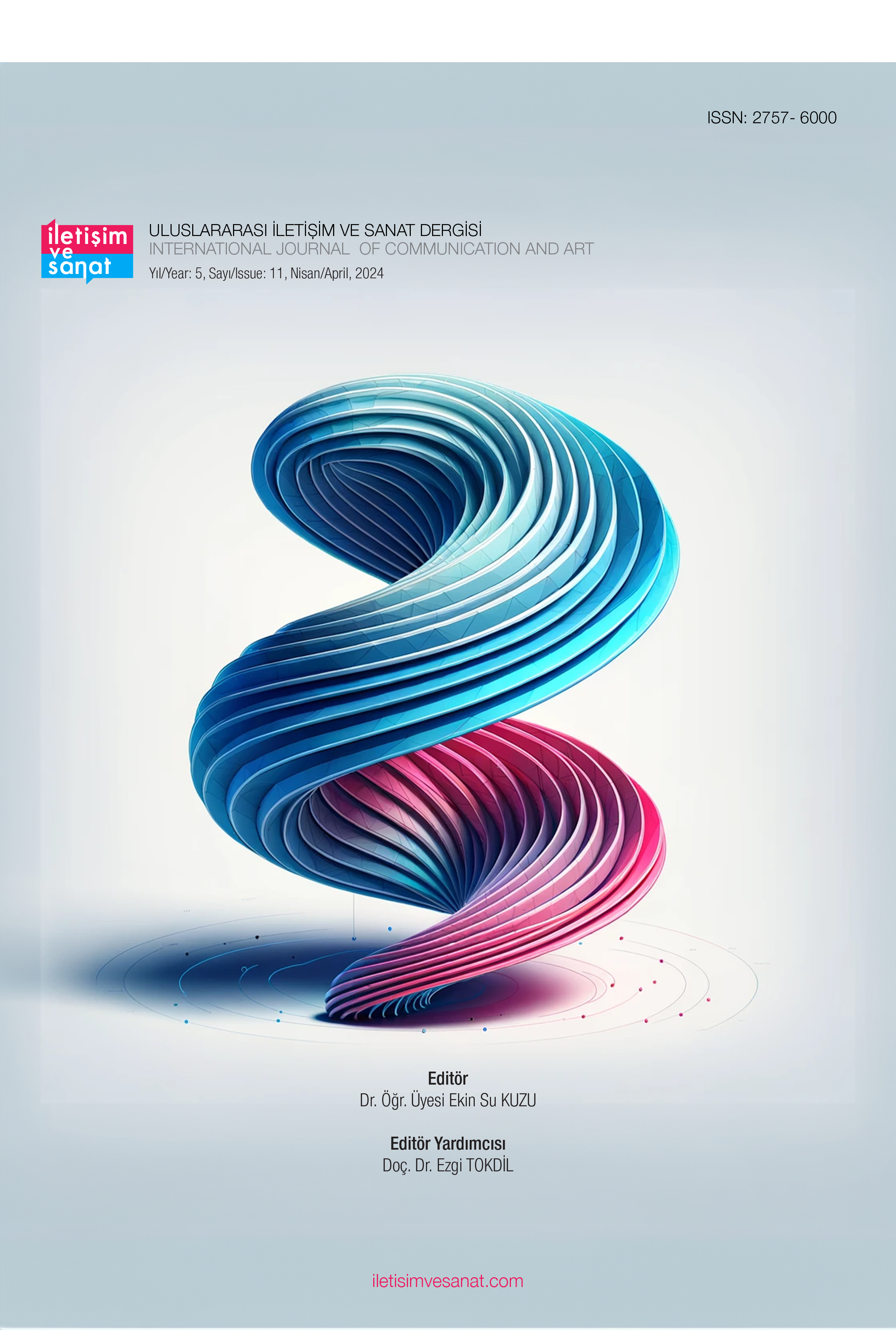TASARIM SÜRECİNDEKİ UYGULAMA HATALARININ NEGATİF BİLGİ KAVRAMI ETRAFINDA TASARIM DİLİNE DÖNÜŞTÜRÜLMESİ
Author :
Abstract
Negatif bilgi kavramı bugüne kadar birbirinden farklı kabul edilen birçok araştırma alanının konusu olmuştur. Genel olarak kavram; yapılmaması, uzak durulması gereken durumları ve hataları ifade etmektedir. Grafik tasarım görsel bir iletişim biçimidir. İletişim kurarken farklı anlatım biçimlerinin ortaya çıkması kaçınılmazdır. Bu anlatım biçimleri ve farklı üsluplar ise ancak yaratıcı ve yenilikçi olabildiği ölçüde nitelikli tasarımların ortaya çıkmasına zemin hazırlamaktadır. Grafik tasarım özelinde yaratıcılık, daha çok deneyerek ve hatta yanılarak ortaya çıkabilen bir potansiyel olarak değerlendirilmektedir. Tasarım süreci negatif bilgi kavramı etrafında değerlendirildiğinde tasarımcıdan süreç içerisinde karşılaştığı hataları düzeltmesi değil mevcut hataları yeniden tanımlaması ve onları tasarım diline veya anlatım biçimine dönüştürmesi beklenmektedir. Negatif bilgi kavramının tasarım süreci içerisinde değerlendirildiği çalışmaların sınırlı olduğu tespit edilmiştir. Bu makalede, daha çok eğitim-öğretim alanında incelenen kavram, grafik tasarım süreci içerisinde yeniden tartışılmış ve kavramın tasarım süreci içerisindeki konumu ve sınırları irdelenmiştir. Makalede, grafik tasarımın farklı anlatım biçimleri içerisinde biçimsel hataların ya da teknik imkansızlıklar sonucu ortaya çıkan farklı üslupların tasarım diline dönüşmesi ve bu dönüşümde negatif bilgi kullanımının yeri ve önemi tartışılmıştır. Çalışmanın amacı, ortaya çıkan mevcut farklı ve yaratıcı anlatım biçimlerinin negatif bilgi kavramı ve dolayısıyla tasarımcı kaynaklı ve teknik hatalar ile ilişkilerini tartışmaktır. Çalışmanın içeriğinde nitel araştırma yönteminden yararlanılmıştır. Tasarım sürecindeki hatalardan kaynaklandığı düşünülen ilgili alandaki tasarımlardan bazı örnekler incelenmiştir. Sonuç olarak, negatif bilginin tasarım sürecindeki hataları ifade etmesi açısından bilinçli ya da bilinçsiz olarak tasarımın öğrenilmesi ve iyileştirilmesi için de kullanılabildiği değerlendirilmiştir. Çalışmanın, tasarım sürecinde hata yapmanın yeni bilgileri ve tasarım üsluplarını ortaya çıkarması, yaratıcı fikirlere zemin hazırlaması açısından alana katkı sağlayacağı düşünülmektedir.
Keywords
Abstract
The concept of negative knowledge has been the subject of numerous research areas that are considered different from each other. The concept in general refers to situations and mistakes that should not be done and should be avoided. Graphic design is a form of visual communication. It is inevitable that various forms of expression emerge when communicating. These forms of expression and various styles pave the way for the emergence of qualified designs only to the extent that they are creative and innovative. In graphic design, creativity is considered as a potential that can be revealed by trying and even making mistakes. When the design process is evaluated around the concept of negative knowledge, the designer is expected not to correct the errors he encounters during the process, but to redefine the existing errors and transform them into a design language or form of expression. It has been determined that studies in which the concept of negative knowledge is evaluated within the design process are limited. In this article, the concept, which is mostly examined in the field of education and training, is re-discussed within the graphic design process and the position and boundaries of the concept within the design process are examined. In the article, the transformation of different styles that emerge as a result of formal errors or technical impossibilities in different expressions of graphic design into a design language and the place and importance of using negative knowledge in this transformation are discussed. The aim of the study is to discuss the relationship between the existing different and creative forms of expression and the concept of negative information, and thus the designer-induced and technical errors. Qualitative research method was adopted in the content of the study. Some examples of designs in the related field, which are thought to be caused by errors in the design process, were analyzed. As a result, it was evaluated that negative knowledge can also be used consciously or unconsciously for learning and improving design in terms of expressing errors in the design process. It is thought that the study will contribute to the field in terms of creating new knowledge and design styles and preparing the ground for creative ideas by making mistakes in the design process.
